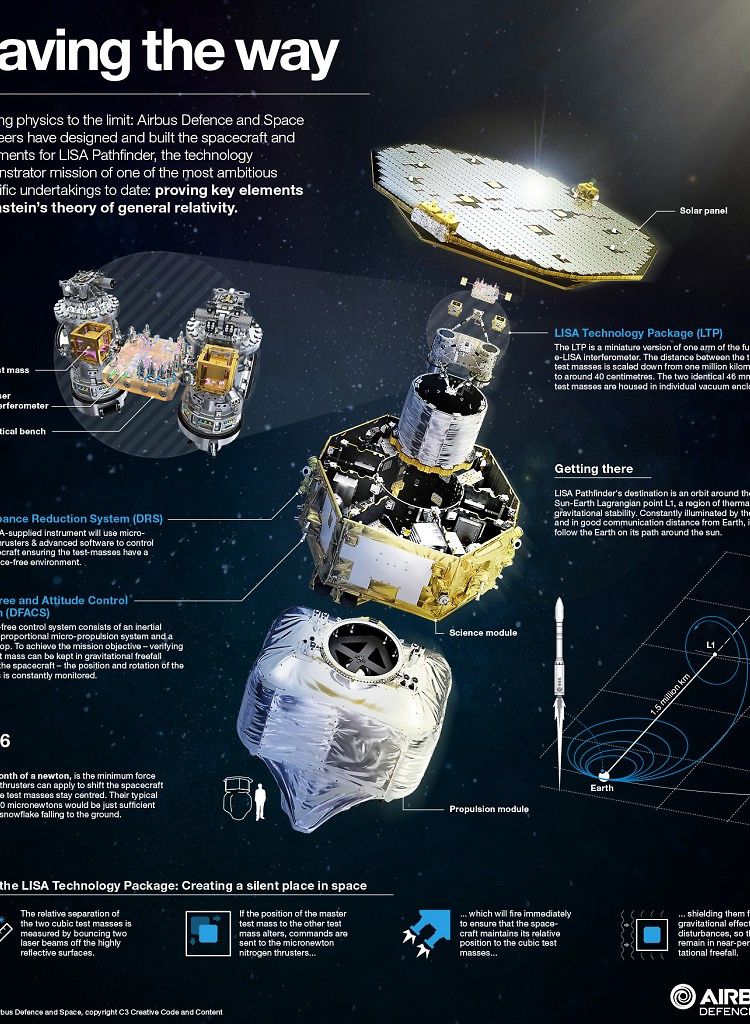Summary
- - Launched in 2015 - Mission: Test technology for detection of gravitational waves - Airbus Defence and Space designed and built the spacecraft & instruments - Much larger mission to follow in 2035
Airbus Defence and Space engineers have designed and built the spacecraft and instruments for a mission, which will assist one of the most ambitious scientific undertakings to date: proving key elements of Albert Einstein’s theory of general relativity.
The European Space Agency (ESA) launched LISA Pathfinder in 2015 to test technology for detection of gravitational waves caused by black holes.
This unique mission requires engineering that was never done before. Airbus Defence and Space’s engineers in Stevenage in the United Kingdom designed and built the overall system and platform, while the Drag-Free Attitude Control System (DFACS) as well as the LISA Technology Package (LTP) was developed in Friedrichshafen in Germany.
A spacecraft that they created is able to manage its own gravitational, magnetic and thermal environment, which shields the test masses – two identical gold and platinum cubes – from all forces except gravity. It does not only transport the payload to its destination, the spacecraft itself forms part of the experiment.
“The point is to show that the technological concepts developed for the detection of gravitational waves in space actually work,” says Ian Honstvet, the Project Manager of LISA Pathfinder.
The challenge is immense. Even in space, there are many forces in play apart from gravity, including radiation pressure from sunlight, charged particles from solar wind and tiny micrometeoroids.
LISA Pathfinder‘s destination is an orbit around the first Sun-Earth Lagrangian point L1. In this thermally and gravitationally stable region, the mission will be in a good communication distance from our planet and constantly illuminated by the Sun as it will follow the Earth in its orbit.
If LISA Pathfinder lives up to expectations, another mission, LISA, planned for 2035, will send into space a cluster of three spacecraft with free-flying test masses to replicate the experiment on a much larger scale. The spacecraft will form an equilateral triangle with side lengths of about a million kilometres, creating the largest man-made structure ever in space. Precise heterodyne laser interferometry will then detect the small changes in distance triggered by gravitational waves.
